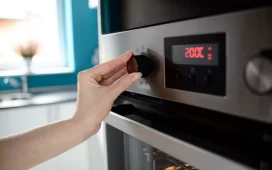Internet connectivity has become essential infrastructure in modern homes, yet many condominium buyers discover Wi-Fi problems only after moving in. Concrete walls, metal structures, and neighbouring networks can create frustrating dead zones that impact daily life and work. Developments like faber-Residences incorporate structural elements and technological infrastructure that support reliable connectivity throughout their units, but not all condominiums offer this advantage. Identifying potential connectivity issues before purchase can save you from expensive remediation efforts later. Here’s how to detect and evaluate Wi-Fi performance during your condo search.
Common causes of condo Wi-Fi problems
Condominium buildings present unique challenges for wireless signals that single-family homes typically don’t face:
- Reinforced concrete walls and floors that block signals
- Metal elements in construction that reflect or absorb waves
- Elevator shafts and utility runs that create barriers
- Multiple competing networks causing interference
- Distance from the unit entry point where the service enters
- Mechanical rooms with equipment generating interference
- Reflective surfaces like large windows and mirrors
These structural elements can create surprising dead zones even in smaller units, making signal testing essential before purchasing.
Pre-purchase testing strategies
Smart buyers now evaluate internet connectivity alongside traditional concerns like location and amenities. During property viewings, implement these testing approaches:
- Ask permission to perform a simple speed test in different rooms
- Use Wi-Fi analyser apps that visualise signal strength
- Test different locations within each room, including corners
- Check speeds during evening hours when network congestion peaks
- Verify cellular signal strength for backup connectivity
- Ask current residents about their connectivity experiences
Document your findings with screenshots or notes to compare different properties objectively.
Questions to ask the seller and building management
Direct inquiries can reveal valuable information about connectivity challenges:
- Does the building have pre-installed networking infrastructure?
- Are there restrictions on installing additional access points?
- What internet service providers serve the building?
- Do units have Ethernet wiring or just cable/phone outlets?
- Are there building-wide Wi-Fi amenities in common areas?
- Have other residents reported connectivity problems?
- Would management allow professional signal testing before purchase?
Candid answers to these questions help assess current conditions and your options for improvement if needed.
Warning signs of potential problems
Several indicators suggest a unit might have connectivity challenges:
- Thick concrete walls between rooms
- Corner units with exterior walls on multiple sides
- Units far from main utility connections
- Sellers who dodge questions about internet performance
- Units surrounded by elevator shafts or mechanical systems
- Buildings with metal mesh in walls or specialised glass
- Lower-level units with limited line-of-sight to cell towers
These factors don’t guarantee problems but warrant more careful investigation.
Solutions to consider in your purchase decision
When evaluating a condo with potential connectivity issues, factor in the cost and feasibility of these solutions:
- Professional installation of ceiling or wall-mounted access points
- Running Ethernet cables to create wired connections where needed
- Signal boosters for cellular backup options
- Alternative internet service options if the building allows
When comparing properties with varying connectivity profiles, add these potential costs to your budget calculations.
Reliable internet has transitioned from luxury to necessity, particularly with remote work becoming standard practice. Treating Wi-Fi performance as a serious consideration during your condo search protects you from discovering costly problems after closing. A methodical approach to testing and questioning helps ensure your new home supports your digital needs without frustrating dead zones or constant troubleshooting.







